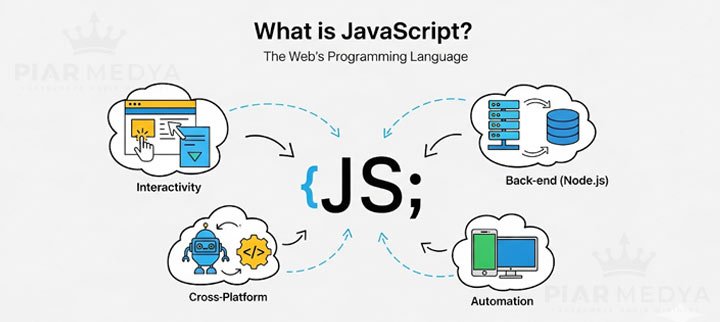The Foundation of Interactive Web Design: The Relationship Between JavaScript and SEO
What is JavaScript, what does it do, and how does it work? Learn the fundamentals, use cases, and importance for SEO of the technology that brings websites to life. You will find answers to all your questions related to topic The Foundation of Interactive Web Design: The Relationship Between JavaScript and SEO in the continuation of the text.

What Exactly is JavaScript and How Does It Work?
Why is JavaScript So Important? Key Use Cases
JavaScript and SEO: The Critical Balance to Maintain
⚠️ The Golden Rule of JavaScript SEO
Conclusion: JavaScript is a Part of Strategic Web Design
Have you ever wondered about the secret force that makes the modern internet an interactive, dynamic, and living platform? The animated sliders that greet you when you enter a website, the content that updates instantly when you click, the real-time warnings in the forms you fill out... The magic wand behind all these interactions is: JavaScript (JS).
If HTML is the skeleton of a web page and CSS is its skin and clothes, then JavaScript is the nervous system that moves that skeleton and gives it life. In our comprehensive guide, we will delve into what JavaScript is, how it works, why it is indispensable for modern web design and digital marketing, and most importantly, its critical relationship with your SEO performance.
What Exactly is JavaScript and How Does It Work?
In its most basic definition, JavaScript is a programming language designed to run in web browsers. Its job is to take static HTML and CSS code and give them interactive features. It allows us to write code that reacts to user actions such as clicking a button, typing in a form, or scrolling on a page.
JavaScript is a "client-side" language. This means the code is executed directly in the user's web browser (Google Chrome, Firefox, etc.), not on the web server. This allows for instant changes on the page without repeatedly sending requests to the server, which makes websites much faster and more fluid.
Why is JavaScript So Important? Key Use Cases
The power of JavaScript lies in the functionality it brings to websites. Here are some of its most common use cases:
- Interactive Forms: Instantly validating information submitted by users (e.g., "Please enter a valid email address.") and improving the user experience.
- Dynamic Content Loading: Loading new content without a full page refresh. The "load more" buttons on social media feeds or news sites are perfect examples of this.
- Animations and Visual Effects: Drop-down menus, image galleries (sliders), and page transition effects that capture the user's attention and provide a sleek, modern look.
- Advanced User Interfaces: Developing complex web applications like drag-and-drop features, interactive maps, and online games.
- E-commerce Experience: Features like product filtering, interactive product images, and a dynamic shopping cart are JavaScript functions that directly impact e-commerce sales.
JavaScript and SEO: The Critical Balance to Maintain
While JavaScript can elevate the user experience, it can turn into an SEO nightmare if configured incorrectly. Although Google can crawl and process JavaScript, this requires far more resources than crawling pure HTML and carries certain risks.
⚠️ The Golden Rule of JavaScript SEO
For Google to see a piece of content, that content must either be present in the page source (HTML) or be rendered quickly and efficiently by JavaScript. If displaying your content depends on the execution of complex JavaScript code, Google might not see it at all, or might see it with a delay.
Common JS SEO Issues:
- Slow Loading Times: Heavy JavaScript files can slow down a site's loading speed, negatively affecting Core Web Vitals metrics and potentially causing a drop in rankings.
- Indexing Problems: If content or links are loaded entirely with JavaScript, Googlebots may fail to discover them.
- Faulty Implementations: Poorly configured JS code can lead to inefficient use of the crawl budget.
To overcome these problems, advanced techniques like Server-Side Rendering (SSR) or Dynamic Rendering are used. This is where working with a professional SEO agency that understands both creative design and technical SEO ensures your site is loved by users and search engines alike. You can find more technical details on the topic in Google's own JavaScript SEO guide.
Conclusion: JavaScript is a Part of Strategic Web Design
JavaScript is no longer just a tool for adding a few visual effects to websites. It is a powerful technology at the heart of the user experience, directly influencing conversion rates, and requiring careful management in a delicate balance with SEO. Leveraging the power of JavaScript is essential for a modern and successful digital presence.
But using this power correctly requires a strategic vision that goes beyond coding knowledge. At Piar Medya, we use JavaScript in the most efficient way, mindful of this balance, while delivering web design solutions that are both visually appealing and designed to climb the search engine rankings. Contact us for your project and discover how we can use the power of interactivity for your brand.






